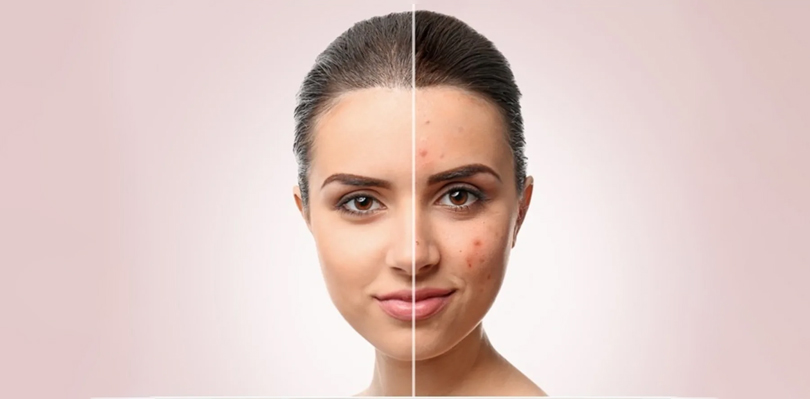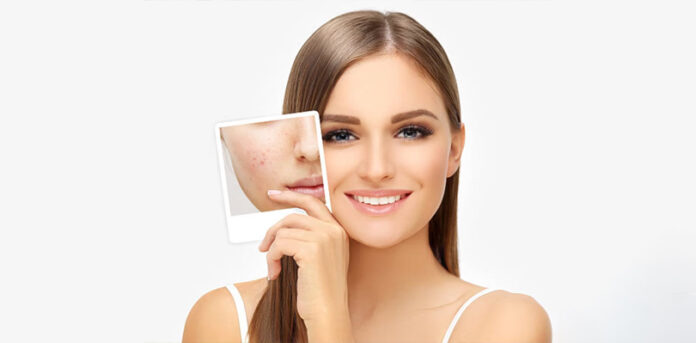Dealing with annoying pustules can be a frustrating experience right? But there is no need to worry as several simple remedies can reduce these unwelcome skin blemishes right from the comfort of your home. Pastules, small, inflamed, pus-filled bumps that usually appear on the skin, can be caused by various factors, such as acne, allergies, or bacterial infections. While it’s important to consult a healthcare professional for extreme or persistent cases, several natural and easy remedies can help reduce their appearance and promote healthy skin.
What Are Pustules?
Pustules are inflamed, and pus-filled pimples that appear on the skin’s surface. They are a type of acne bump and are common on acne-prone skin. These are characterized by their white or yellowish center, which is filled with pus, a thick fluid of dead white blood cells, bacteria, and tissue debris. Such lesions are commonly surrounded by red, inflamed skin and can be tender or painful to the touch.
Common Causes Of Pustules
Pustules, just like other types of acne types, can be caused by a variety of factors. Some of the common causes of pustules are:
- Bacterial Infection
- Excess Sebum Production
- Dead Skin Cells
- Certain Medications
- Hormonal Changes
- Stress
- Diet
- Genetics
- Poor Hygiene
- Pollution
- Humidity
- Poor Skincare Routine
- Dry Climate
- Certain Foods
How To Get Rid Of Pastules At Home?

Here are some effective methods to get rid of pustules at home:
Cleanse Your Skin
Wash your face with a mild and fragrance-free cleanser twice a day to remove excess oil, dirt, and bacteria. Don’t use harsh scrubs or cleansers because they can irritate the skin and worsen pustules.
Warm Compress
Apply a warm and damp cloth to the face for 10-15 minutes several times a day. This can help open up the pores and allow the pus to drain and reduce inflammation.
Topical Treatments
Use creams and lotions that contain chemicals such as benzoyl peroxide, salicylic acid, or sulfur. These ingredients can clear pores and kill bacteria. Use as directed, and be consistent with the application.
Tea Tree Oil
Tea tree oil has natural antibacterial properties. Dilute 4 to 5 of tea tree oil with a carrier like coconut oil and apply it to the affected area using a cotton pad. Do a patch test first to make sure your skin doesn’t react adversely.
Honey and Cinnamon Mask
Mix honey and cinnamon powder to form a paste. Honey has antibacterial properties, while cinnamon can help reduce inflammation. Apply this mixture to your face, especially on the pustules. Leave the mask on for 10-15 minutes. Rinse off with warm water.
Aloe Vera Gel
Aloe vera has relaxing and anti-inflammatory properties. Apply pure aloe vera gel to the affected area. It can also help reduce redness, inflammation, and pustules.
Keep Your Hands Off
Do not touch or pick the pustules, as it can introduce more bacteria and worsen the infection. Picking at pustules can lead to scarring.
Healthy Diet
Maintain a balanced diet rich in fruits, vegetables, whole grains, and lean proteins. Also, avoid excessive consumption of processed foods, sugary snacks, and dairy products, as they may worsen acne.
Stay Hydrated
Drink plenty of water to keep your skin hydrated and promote overall skin health.
Manage Stress
Stress can trigger hormonal changes that may worsen acne. Practice stress-reducing activities such as yoga, meditation, or hobbies to keep stress levels in check.
FAQs
When can I expect to see results from using home remedies to reduce pustules?
The effectiveness of home remedies varies from person to person. However, with consistent application and proper skincare, you may begin noticing improvements within a few days to a couple of weeks. If you do not observe any improvement or if the condition worsens, it is advisable to seek the advice of a healthcare professional.
Are there any particular foods I should avoid that can make pustules worse?
While the response to foods varies from person to person, some people find that consuming dairy products and high-glycemic-index foods (like sugary snacks and processed carbs) can worsen acne, including pustules. Therefore, maintaining a balanced diet and observing how your skin reacts to different foods can help you identify triggers.
Is a pustule the same as a pimple?
Yes, a pustule is a type of pimple. It is a small, inflamed, pus-filled bump on the skin’s surface. Such bumps are a common form of acne lesion and can appear red at the base with a yellow or white center filled with pus. They occur when hair follicles become clogged with dead skin cells, oil, and bacteria, leading to an inflammatory response by the body. Depending on the stage of development and appearance, pustules are often referred to as pimples, zits, or whiteheads.

